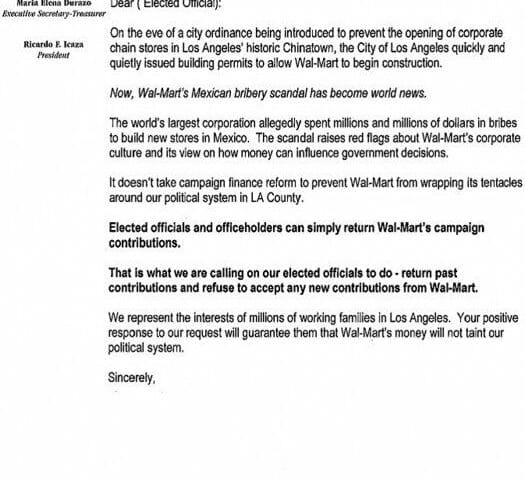

 Today 1,000 new millionaires (and a few billionaires) are walking the planet, thanks to Facebook’s new IPO. Facebook has fundamentally changed the way people connect to each other and presents an unprecedented opportunity for advertisers to reach highly targeted markets. That explains its over-the-top, $104 billion valuation. What is not being talked about in the business sections is the technology that made Facebook possible. If you go to the “developer’s section” at the bottom of a Facebook page you will find this statement under “Open Source:”
Today 1,000 new millionaires (and a few billionaires) are walking the planet, thanks to Facebook’s new IPO. Facebook has fundamentally changed the way people connect to each other and presents an unprecedented opportunity for advertisers to reach highly targeted markets. That explains its over-the-top, $104 billion valuation. What is not being talked about in the business sections is the technology that made Facebook possible. If you go to the “developer’s section” at the bottom of a Facebook page you will find this statement under “Open Source:”
“Facebook has been developed from the ground up using open source software. Developers building with Platform scale their own applications using many of the same infrastructure technologies that power Facebook.”
“Developed from the ground up” — i.e., by the open-source communities that allow people to freely use, distribute and modify source code in unending cycles of improvement. If Ben Mezrich’s Facebook history,
» Read more about: How Mark Zuckerberg Became a Billionaire »


A few weeks back I stood at the corner of 65th and Normandie, in South Los Angeles, remembering what used to be there. An old church, maybe from the 1930s — Spanish Revival with white-washed plaster and enough curved red tile on the roof to make you think it might be real. The congregation members had long since moved away or died, and now the building itself was gone, replaced by sparkling new apartments with units exclusively designed for emancipated youth. Each year in Los Angeles County 1,500 kids get cut loose from the foster-parent system. They are 18 years old with no family, no job, no place to live, no skills and no support to learn any, which is why a majority will end up on the streets or in jail.
And this is why this building, the Epworth Apartments, means so much. Over the years, it could save the lives of scores of young adults.
» Read more about: South LA Story: A Garden and a Place Called Home »


By Carl Franzen
(Note: Last January Donald Cohen wrote here of the conservative political animus against new, green lighting technologies – namely, compact fluorescent light bulbs (CFLs). The following repost of a May 12 Talking Points Memo feature looks at the evolution of another alternative to wasteful incandescent lighting – illumination by light-emitting diodes (LEDs).
Battle lines were drawn in Las Vegas, Nevada this week at the 23rd annual Lightfair International trade show, an exposition of the latest in artificial lighting technology.
Spurred in part by the controversial, misunderstood, national phase-out of energy inefficient incandescent bulbs that began in January, companies are racing to develop light-emitting diode (LED) bulbs that meet the new energy standards, and yet will provide the same lighting quality that consumers are used to getting from the old, inefficient incandescents.



Until recently the Internet, along with the devices that brought it to us and the platforms that have expanded its usefulness, held a certain cool, selfless allure. The Web was mostly the idea of young, rule-breaking rebels, and their insurgent mystique made them hero geeks. Browsing a favorite blog on our laptops, a cup of red-eye coffee nearby, we felt a part of the New. Then money began doing what it always does to young, rule-breaking rebels – it turned them into our parents, our landlords and our loan officers.
It began in earnest, I suppose, with last year’s tiff between Amazon.com and the state of California over Sacramento’s insistence that the online retail behemoth start collecting state taxes on its sales. Amazon eventually struck “compromises” with California and other states that mostly favored Amazon. Many of us in California smiled – we got an extra year of purchasing on the site without paying taxes.
» Read more about: How Our Internet Heroes Lost Their Cool »


New York City’s Public Advocate, Bill de Blasio, and the Coalition for Accountability in Political Spending (CAPS) have put together a nifty online chart called 6 Degrees of Walmart. It’s actually more than a chart – think of it as a kind of star finder that allows the user to locate eight constellations of alleged corporate malfeasance and consumer abuse committed by the retail giant. Click on its Gun icon and you’ll find out how Walmart, through its support of the American Legislative Exchange Council (ALEC), backs Stand Your Ground laws. Click the Dollar sign and you’ll learn how Walmart colludes with the Business Roundtable and others to protect corporate tax subsidies.
(Please note: The above image is not interactive; to interact, go to the 6 Degrees of Walmart site.)
There’s also an explanation of how Walmart tries to burnish its environmental and corporate responsibility cred through its “sustainability program”


[caption id="attachment_8972" align="aligncenter" width="432"] Cassidy Noblett[/caption]
Cassidy Noblett[/caption]



(The following action alert comes from ClimatePlan.org; news of the alert first appeared at Housing California, which lists 18 Los Angeles County projects that could be affected by the transfer of housing construction funds.)
Senate President pro Tem Darrell Steinberg is considering using unencumbered housing funds from former redevelopment agencies to balance the 2012-13 state budget. Such a sweep would impact at least 175 pipeline developments poised to create 23,455 construction-phase jobs in the next two years.
In recent comments to the Sacramento Bee, Steinberg raised the possibility of abandoning his SB 654, which would preserve the low-mod balances for their original intended use. A survey indicates this move would threaten construction of at least 10,215 homes that were counting on the availability of redevelopment funding to move forward.
Key Assembly members recognize the value of the jobs and taxes generated by home construction,
» Read more about: State Housing Construction Funds in Jeopardy »



This week the Los Angeles County Federation of Labor sent letters to every elected official in L.A. County (including Congress members), urging them to return all campaign contributions they may have received from Walmart – and to refuse future donations from the retail giant. The letter, which is signed by a broad spectrum of union leaders, juxtaposes Walmart’s alleged bribery scheme in Mexico with L.A. City Hall’s quick approval of the corporation’s permits for a new store in Chinatown. (The letter’s text appears below.)
“It doesn’t take campaign finance reform,” the signatories say, “to prevent Walmart from wrapping its tentacles around our political system in L.A. County.”

» Read more about: Labor to Electeds: Return Walmart Money! »


 (The following post first appeared May 1 on Truthdig.)
(The following post first appeared May 1 on Truthdig.)
By Bill Boyarsky
By chance, the revelation of how Apple evades millions of dollars in taxes broke three days before May Day, when workers of the world traditionally protest such injustice.
Although the Apple practices aren’t illegal, the dodging of taxes on revenue generated, to a large extent, by low-wage Chinese workers, was a perfect introduction to this year’s May 1 observance, highlighted by the Occupy movement’s call for strikes and demonstrations around the country. The goal: Protest corporate domination of an economy being pulled downward by growing income inequality and intractable unemployment.
The New York Times reported that the technology company has used loopholes to reduce its tax bills in 21 states and overseas by billions of dollars annually by creating subsidiaries in places with low-tax or no-tax policies.
» Read more about: Organizing for Change: Different Drummers, Common Cause »


The SEC is dragging its feet implementing a section of the Dodd-Frank reform that would require publicly traded companies to calculate the ratio between the CEO’s pay and that of the firm’s median pay package. The New York Times editorial board urges them to push forward.
Corporate lobbyists say it’s too complicated to figure out the math. They figured out how to create uber-complex financial products that untangled the global economy, but aren’t able to divide the CEO’s earnings (they must know) by the median employee pay?
Of course, the real reason they oppose the law is that they don’t want to add fire to the public debate about excessive CEO salaries – certainly while the rest of America struggles to pay bills, put kids through college and afford mortgage payments. Obscurity, not transparency, benefits the privileged.
Their opposition to useful information for investors and consumers is a replay of earlier legislative battles.
» Read more about: Why Can’t CEOs Do the Math on Their Pay? »